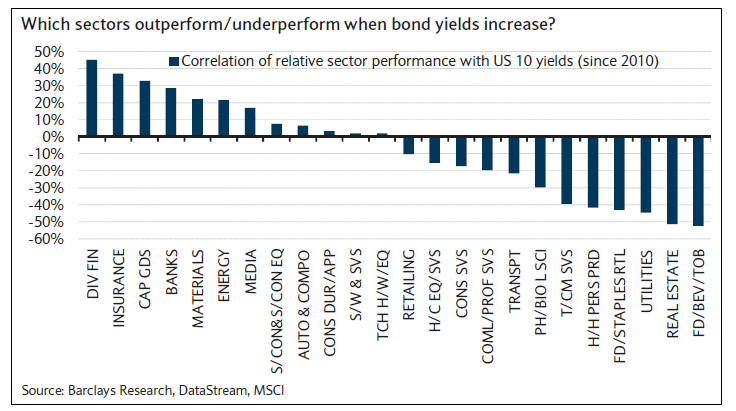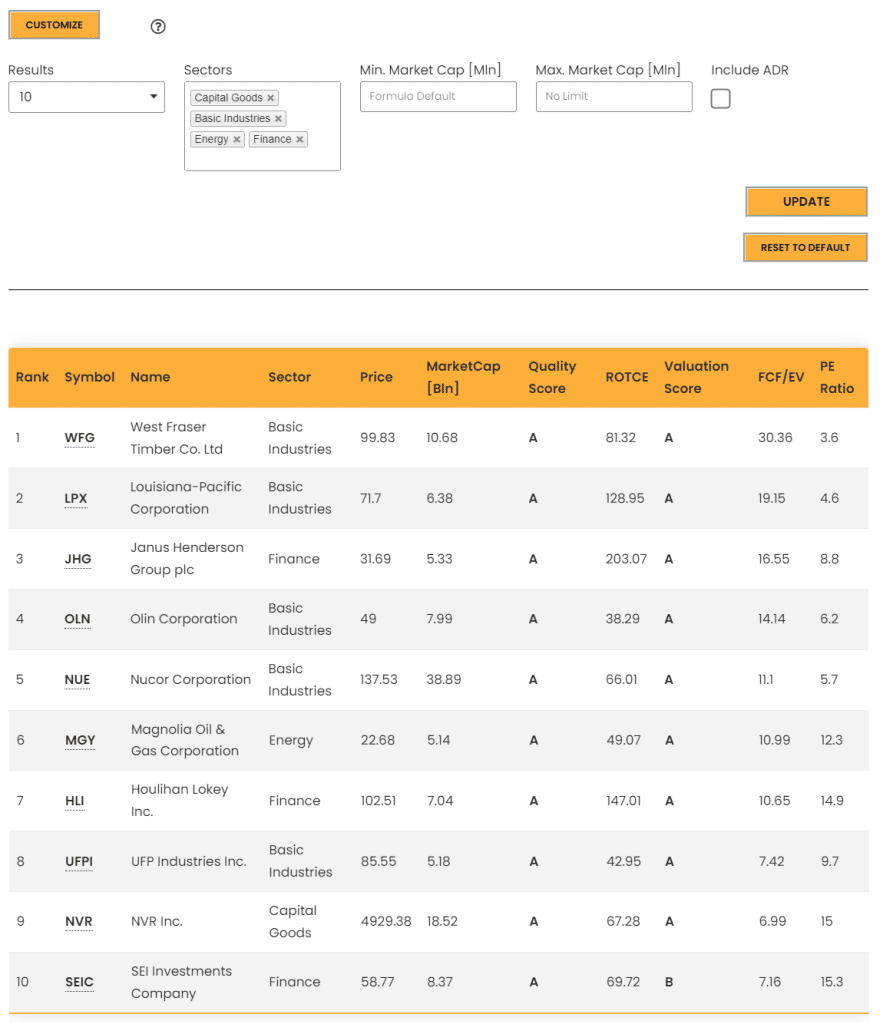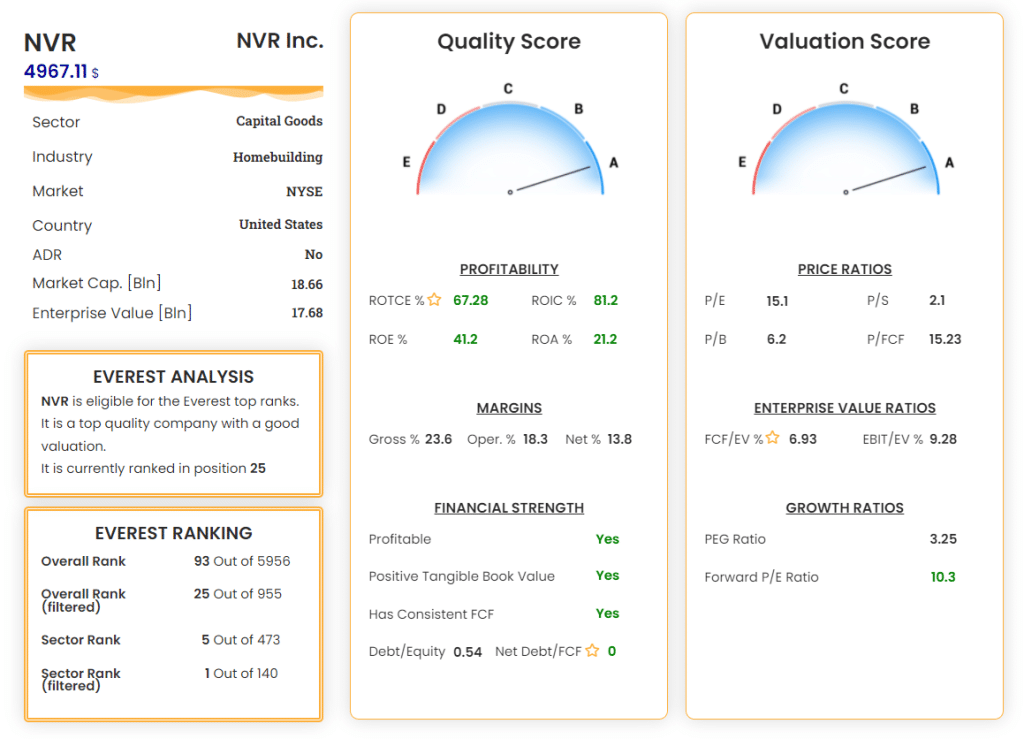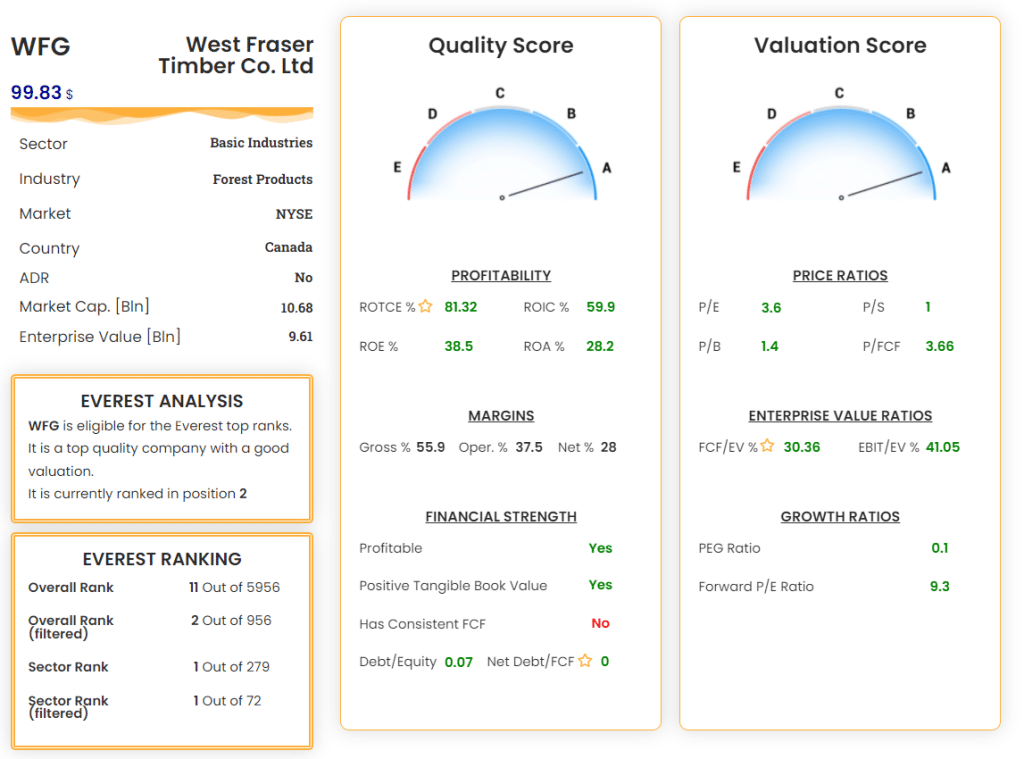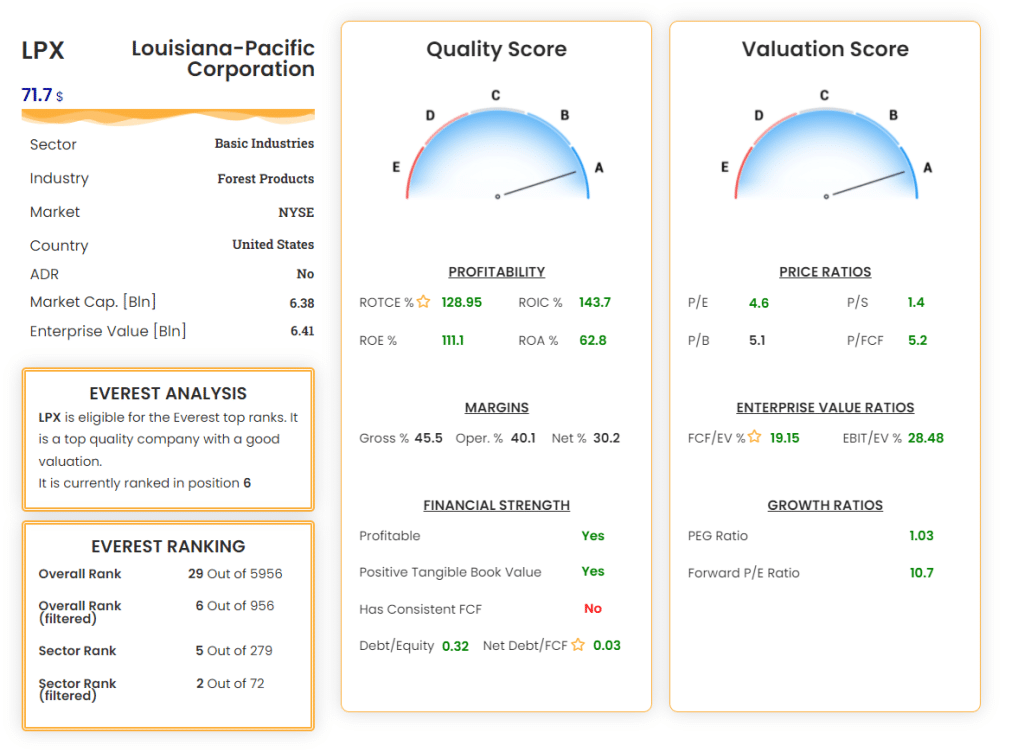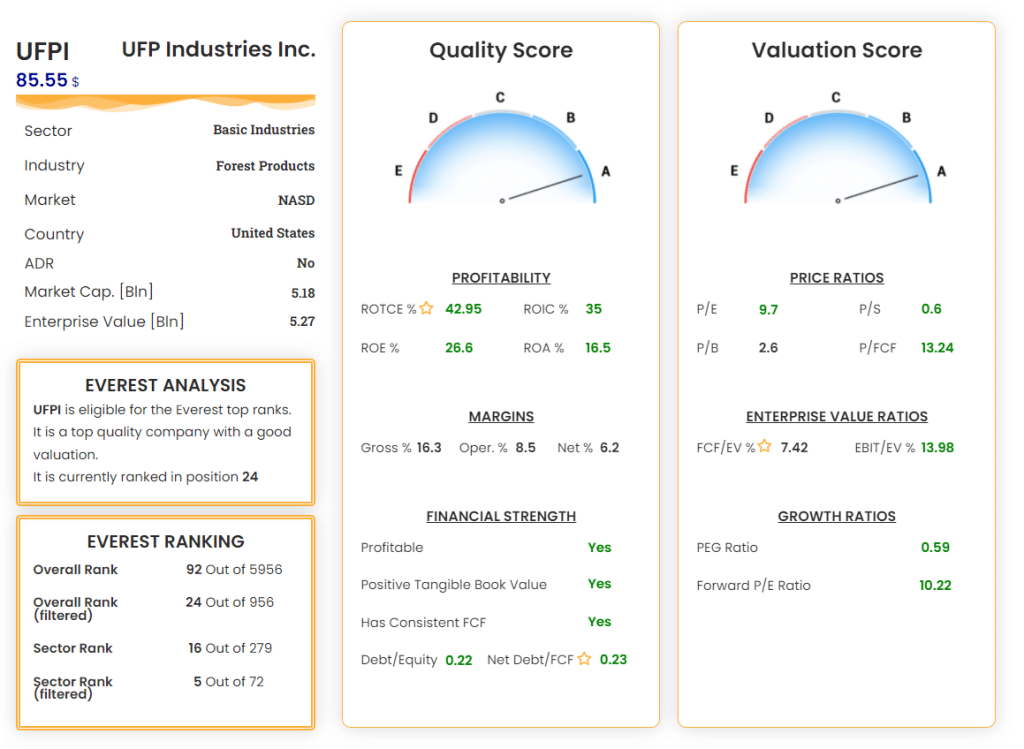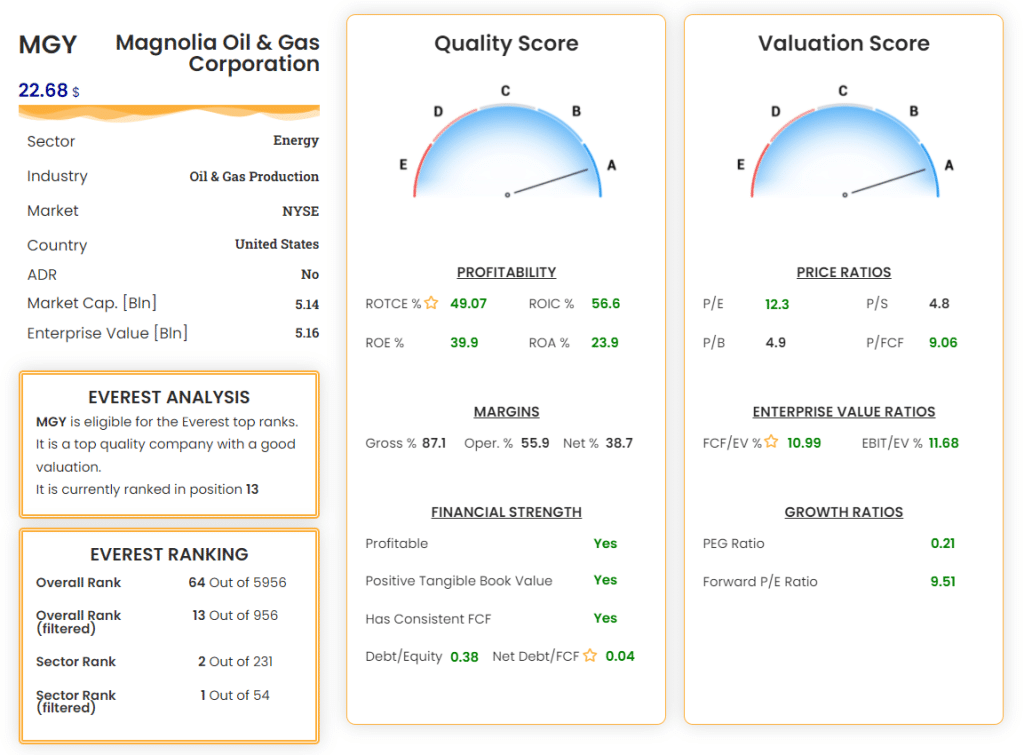- In Europe and the United States inflation has reached levels not seen since the 1980s. Central Banks are consequently starting to rise interest rates, which has already provoked some turmoil in the stock market.
- We are going to see which sectors benefit from the current scenario and which one is better to avoid.
- We will also show some interesting stocks for an high-inflation environment, discovered by the Everest Formula Screener.
Are you interested in finding the best value stocks in each sector on your own? Premium members can use the Everest Screener to get the most valuable companies to invest in for each sector, everyday. Join now!
Introduction
The COVID-19 pandemic, and the range of policies aimed at mitigating its impact, have triggered a return to levels of inflation not seen in 40 years, both In Europe and in the United States. Raising interest rates is one of the main tools in the hands of central banks to combat inflation. The Bank of England (BoE) has already begun, whilst the U.S. Federal Reserve (Fed) has adopted a much more aggressive tone. The European Central Bank (ECB) has followed suit, due to the Eurozone unemployment and inflation reaching their lowest and highest levels respectively, in the single currency era.
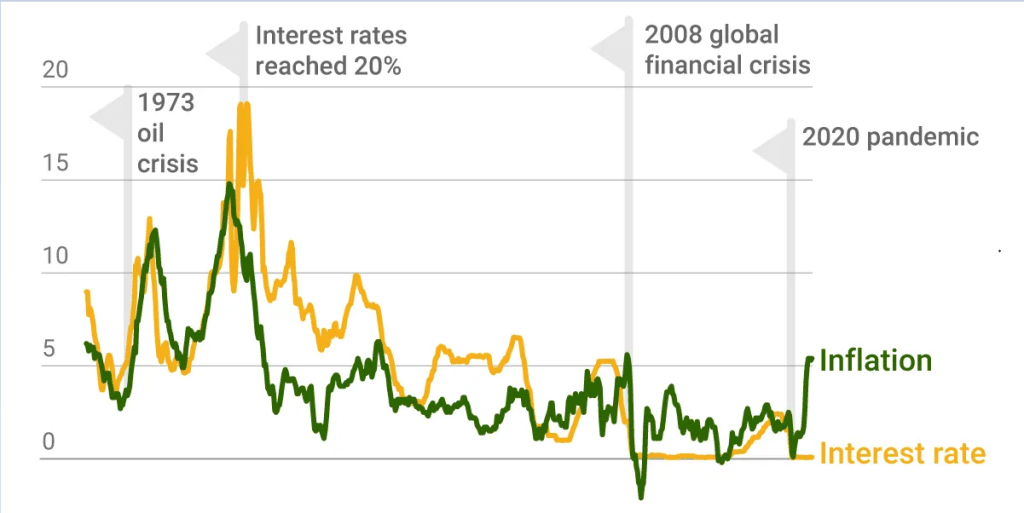
But how do rising inflation and consequently rising interest rates affect the stock market? In principle, investing in companies is a tool to protect against inflation, as companies are able to increase the prices of their products (and consequently their profits) as the cost of living rises. However, a distinction must be made between the different companies and sectors within the stock market. If for some companies is easier to align prices with inflation, for others it entails the risk of causing a drop in demand and an exit from the market due to high competition.
In addition, rising interest rates are often seen as a potential danger: it is harder for companies to finance themselves through debt, and to sustain the historical growth that investors are used to.
Growth stocks vs. Value stocks
In the last 10 years we have been accustomed to a constant flow of liquidity towards companies with high growth potential. This trend has already started to falter in the last year and it may suffer a prolonged decline in the coming years. Let’s go over the reasons why.
A basic principle of company valuation is to discount future cash flows: estimates of profit growth over the next few years are evaluated and discounted at a rate equal to what the investor requires as a return. If the current base rate for risk-free investments is 2% (known as the risk-free-rate or RFR, i.e. government bonds or deposit accounts) and the average investor requires 5% more than the RFR to invest in a company, future cash flows will be discounted at a discount rate that is approximately 7% (varying according to the specific risk of the company).
If due to the increase in interest rates (and consequently in the RFR) the RFR reaches a hypothetical 7%, the investor will no longer be willing to earn “only” 7% (which he can already obtain from a “risk free” investment), but will raise his required return to 12% (7%+5%), which leads to a drop in the value of future profits and therefore in the relative overall valuation of the company.
In low interest rate environments (as in recent years), the “cost” of waiting for future growth to materialize is small. But when rates are rising, future growth is less valuable, and investors are no longer willing to pay as much as before.
Growth stocks (which typically pay no dividends, have poor earnings or losses, and have a high P/E ratio because they rely on future profits) will be at a disadvantage compared to value stocks that rely less on future expectations and more on current cash flows. This is evidenced by the fact that value stocks tend to be more directly correlated to both the nation’s current GDP and the 10-year government bonds.
Considerations on the Everest Formula Strategy: Although rising rates initially lead to greater volatility in the markets, it could be a positive element for investors applying the Everest Formula strategy: in fact, the algorithm is focused on selecting companies with high current cash flows and not future ones, and it is highly likely to benefit from the shift of investors’ liquidity towards value stocks.
Sector Analysis
In addition to comparing growth and value stocks, rising interest rates and inflation tend to favor some sectors and disadvantage others. Let’s see which ones.
Sectors that historically benefit from the current environment
- Financial sector: The financial sector has historically been among the most sensitive to changes in interest rates. With profit margins actually expanding when rates rise, entities such as banks, insurance companies, brokerage firms and money managers generally benefit from higher interest rates. Insurance stocks can also prosper as rates rise. In fact, the relationship between interest rates and insurance companies is linear, meaning that the higher the rate, the greater the growth.
- Capital goods sector and producers or direct users of raw materials: The price of materials usually increases at a lower rate than inflation. Companies that use these materials to produce a finished good (or simply in their day-to-day operations) will see a corresponding increase in their profit margins, as their costs remain low relative to their profits. For this reason, these companies are generally seen as a hedge against inflation.
Consideration should therefore be given to stock operating in the commodities sector: steel, oil, corn, wheat, gasoline, lumber, forest resources, plastics, natural gas, coal, and minerals.
Companies that profit from home building and construction may be good bets. Poultry and beef producers may see an increase in demand when rates rise, due to increased consumer spending combined with roughly unchanged costs. - Energy Sector: Rising interest rates are often associated with a strengthening economy, which is positive for all economy-sensitive stocks. Energy stocks have historically behaved with a very high sensitivity to the prospects of a post-pandemic recovery.
Sectors that historically underperformed the market in the current environment
- Technology Sector: while it’s important not to lump all companies in the sector together, the Tech sector is one that historically relies more on future growth and earnings than current earnings. For all the thoughts made so far, it is important to be careful about which companies to evaluate in this sector, which may not have the high returns it has brought in the last decade.
- Consumer Retail Sector: companies that are at the end of the chain and are in direct contact with the customer are the ones with the most competition and have the least power to shape their prices based on the cost of raw materials. They may struggle in a high inflation environment.
A look at the most interesting stocks that the Everest Screener recommends
We used the Everest Screener to scrutinize the most interesting sectors in a rising rate environment, looking for good companies to invest in.
From this list, we’ve selected the companies we think are the most interesting:
NVR – NVR, Inc.
NVR, Inc. is a home builder in the United States that also provides home-related mortgages and insurance. This mix of house building and financial businesses seems perfect to ride all the mentioned advantages related to higher interest rates. In addition, NVR has a past and present history of solid growth in both revenue and market share, has a management team capable of delivering a high return on capital and whose compensation is based on long-term goals (ideal for investors), and is available at a bargain price, with a PE of just 15 compared to analysts’ growth estimates of around 8% for the next 5 years.
NVR is in our opinion the most interesting company of the group.
Lumber-related stocks: WFG – LPX – UFPI
Three companies belonging to the world of lumber, they create products directly from wood and are well diversified both geographically and in terms of products sold. The Everest Formula identifies them as the best bets in the industry as they have the highest profitability within the industry (a sign of a solid competitive advantage) combined with a very advantageous price, with a PE ratio of less than 10 and a remarkable FCF/EV, especially for WFG and LPX which are positioned right in the absolute top 10 of the Everest Formula.
In addition, many industry experts believe that the price of lumber products (which peaked in May 2021 followed by a steep decline) will stabilize at a higher pre-pandemic price in the coming years, making these companies well positioned for the future.
MGY – Magnolia Oil & Gas Corporation
Magnolia Oil & Gas Corporation is engaged in the acquisition, development, exploration and production of oil, natural gas and natural gas liquids reserves in the United States, primarily in the Texas area.
Magnolia Oil & Gas is identified by Everest Formula as the most attractive company in the energy sector. This is due to exceptional margins compared to competitors, high liquidity and financial strength, low debt, all combined with an attractive price. MGY could be the right company to ride the historic period of rising interest rates and great uncertainty in the energy field, which has caused the price of gas and oil to skyrocket and consequently the profits of producing companies, including Magnolia itself.
Conclusions
We have seen that conditions of high inflation and high interest rates can lead to a greater focus on companies that don’t base their value on future growth prospects, but indeed on a solid current position, such as those favoured by Everest Formula. Some sectors may be now more attractive than in the recent past, such as financials, energy, capital goods and commodities.
Interested in more insights like this? Join our community!

